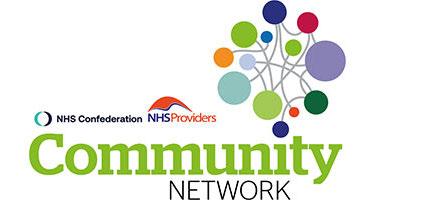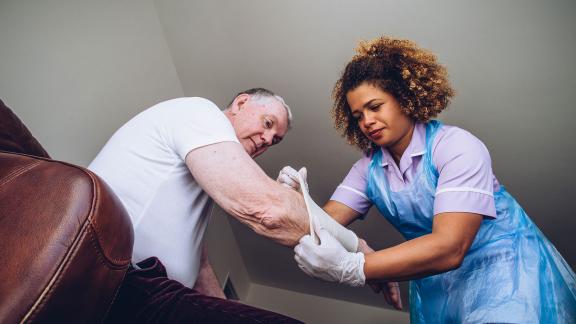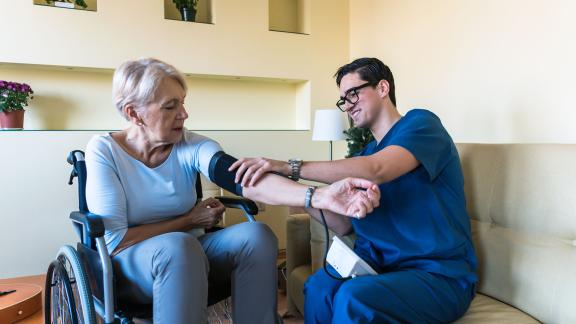Reducing ambulance dispatches in mid-Nottinghamshire

The Nottingham and Nottinghamshire integrated care board has worked collaboratively with East Midlands Ambulance Service NHS Trust, community providers and voluntary sector colleagues to reduce the number of ambulance dispatches in mid-Nottinghamshire and increase capacity to respond to non-injury falls in the area through the use of community first responders.
The case study is produced by the Community Network, which is hosted by the NHS Confederation and NHS Providers.
Key benefits and outcomes
- Reduced number of ambulance dispatches.
- Increased capacity to respond to non-injury falls.
- Reduced number of subsequent patient falls.
- Reduced number of conveyances to hospital.
About the system
The Nottingham and Nottinghamshire integrated care system (ICS) covers a population of over 1 million people living in a mixture of urban and rural areas.
The ICS is made up of four place-based partnerships including Bassetlaw, mid-Nottinghamshire, city of Nottingham and south Nottinghamshire. There is a strong history of partnership working across the ICS.
This is reflected in strong collaboration between East Midlands Ambulance Service NHS Trust (EMAS) and the two urgent community response (UCR) providers in the patch, Nottingham CityCare Partnership Community Interest Company and Nottinghamshire Healthcare NHS Foundation trust.
What the system faced
In October 2021, NHS England (NHSE) launched the 100-day challenge, which asked UCR providers and ambulance services to consider what could be done differently to drive further collaboration and reduce pressure on urgent and emergency care services.
Ahead of this, the Nottingham and Nottinghamshire system had already been supporting collaboration to enable ambulance crews to hand patients over to UCR teams where this is suitable. While this work had started on a small scale, the team was already keen to make this part of its business-as-usual offer, and this laid the groundwork to take on the 100-day challenge. The system had already made a commitment to ensure significant new investment into UCR services.
What the system did
Nottingham and Nottinghamshire integrated care board (ICB) took up this challenge to maximise the potential of UCR services across the system and reduce unnecessary ambulance dispatches. As part of this, EMAS and the two local UCR providers identified two initiatives that could be scaled up to support these national ambitions.
Firstly, the team explored how the Call for Care model could be expanded from mid-Nottinghamshire, where it is well established, to the wider system, and particularly in south Nottinghamshire and Bassetlaw. Call for Care is a care navigation service that offers clinical triage and two-hour response services through a single telephone number accessible to health and care professionals.
As part of this model, UCR providers take calls from the EMAS stack, and where appropriate, divert people to UCR services. To deliver this, a paramedic reviews the call stack and manually provides details for the UCR team to respond to. This is a resource intensive system, and the team acknowledge the need to continually learn and improve the process. This includes through weekly learning sessions to review where they did not divert a suitable call to the UCR team, and understand the reasons why.
In parallel, community first responders (CFR), a team of volunteers who were already working with EMAS, were brought in to the wider UCR model to support with falls, and particularly non-injury falls. To develop this, CFRs received training to help them assess patients, and lifting equipment for their vehicles, which supported them to deliver community support safely and effectively. If CFRs decide that a person would benefit from a full falls assessment, they are referred via the EMAS clinical assessment team to one of the two UCR providers in the area.
Overcoming obstacles
There have been challenges in developing partnership working between UCR providers and EMAS. Firstly, the Call for Care model requires significant time and input from frontline staff in both services. For instance, a paramedic needs to review the EMAS call stack and identify patients who require the right level of care to push through to the UCR team, phone the details through, arrange a clinical handover, track outcomes and complete local reporting.
In part, this system has been designed to overcome concerns around information governance and data sharing from the Computer Aided Dispatch. This has its own drawbacks relating to the resource required, but the teams across Nottingham and Nottinghamshire have worked collaboratively to roll this out without a digital solution to support it.
The interoperability of IT systems has also created challenges, particularly investment and upgrades needed to take place before implementation. It can also be difficult to pull together datasets from multiple organisations to develop evidence on impacts. The team therefore developed a manual process using an Excel spreadsheet in order to understand this better.
Results and benefits
Expanding the Call for Care model and use of CFRs has led to:
- enhanced collaboration between partners, bringing benefits to patients and the local system
- reduced number of ambulance dispatches in mid-Nottinghamshire due to expansion of Call for Care
- increased capacity to respond to non-injury falls in the area due to use of CFRs as part of the wider community response
- reduced number of subsequent patient falls
- reduced number of conveyances to hospital, with 932 calls being pushed through to the UCR team so far
- an increase in emergency response crews handing over to the UCR team on scene, freeing up ambulance staff time to attend other calls
Takeaway tips
- Speak to people. Open and honest communication between EMAS and UCR partners, even where there are challenges and pressures, has been key.
- Keep looking for new opportunities. The team is now:
- exploring embedding these initiatives as business as usual, operating across the system
- agreeing a set of codes with the ambulance service to allow calls to be pushed through to UCR teams digitally (expected to be live shortly)
- further developing collaboration through initiatives like fortnightly ‘reflect and learn’ sessions.
Further information
For more information about this case study, contact Gemma Whysall, ageing well programme director: gemma.whysall@nhs.net




